
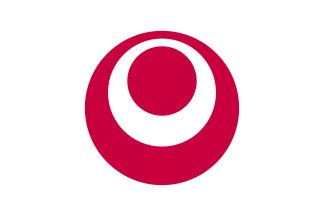

Peace Monuments
in Okinawa (Japan)
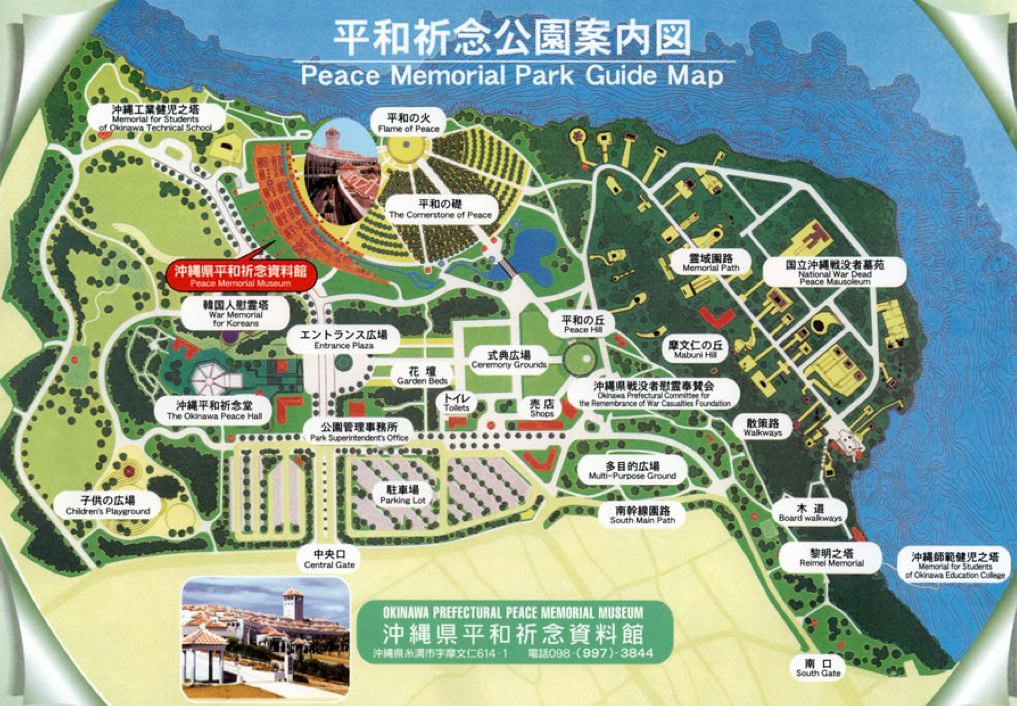
Right click image to enlarge.





1853 - Okinawa Bell (Gokoku-ji), Bancroft Hall, US Naval Academy, Annapolis, Maryland (USA). Commodore Matthew C. Perry [1794-1858] carried an Okinawa temple bell to the USA & proposed that it be mounted atop the Washington Monument (then under construction) in Washington, DC. His widow donated the bell to the US Naval Academy where it was displayed on the grounds (left image circa 1902), then placed just outside Bancroft Hall, the academy's largest building (right image). In 1987, the bell was returned to Okinawa, and a replica now serves at the academy.





1945? - Japanese Bell, Buena Vista Winery, Sonoma, California (USA). About 18 tall. 'I remember hearing someone say once that it was from the 14th century... It is bronze or brass and heavily oxidized to a lovely blue-green color. One of the former owners of the winery was a bit of a collector and I believe he left it here... His name was Frank Bartholomew..." [Email from the winery, May 2004.] Frank Bartholomew was the first correspondent into Naha, Okinawa, while that city was still under siege in 1945, was on the battleship Missouri when Japan surrendered to end World War II, and was the last correspondent to leave when Shanghai fell to the Communists. He became president of United Press in 1955 and merged it with International News Service (INS) to create United Press Internatonal (UPI) in 1958.


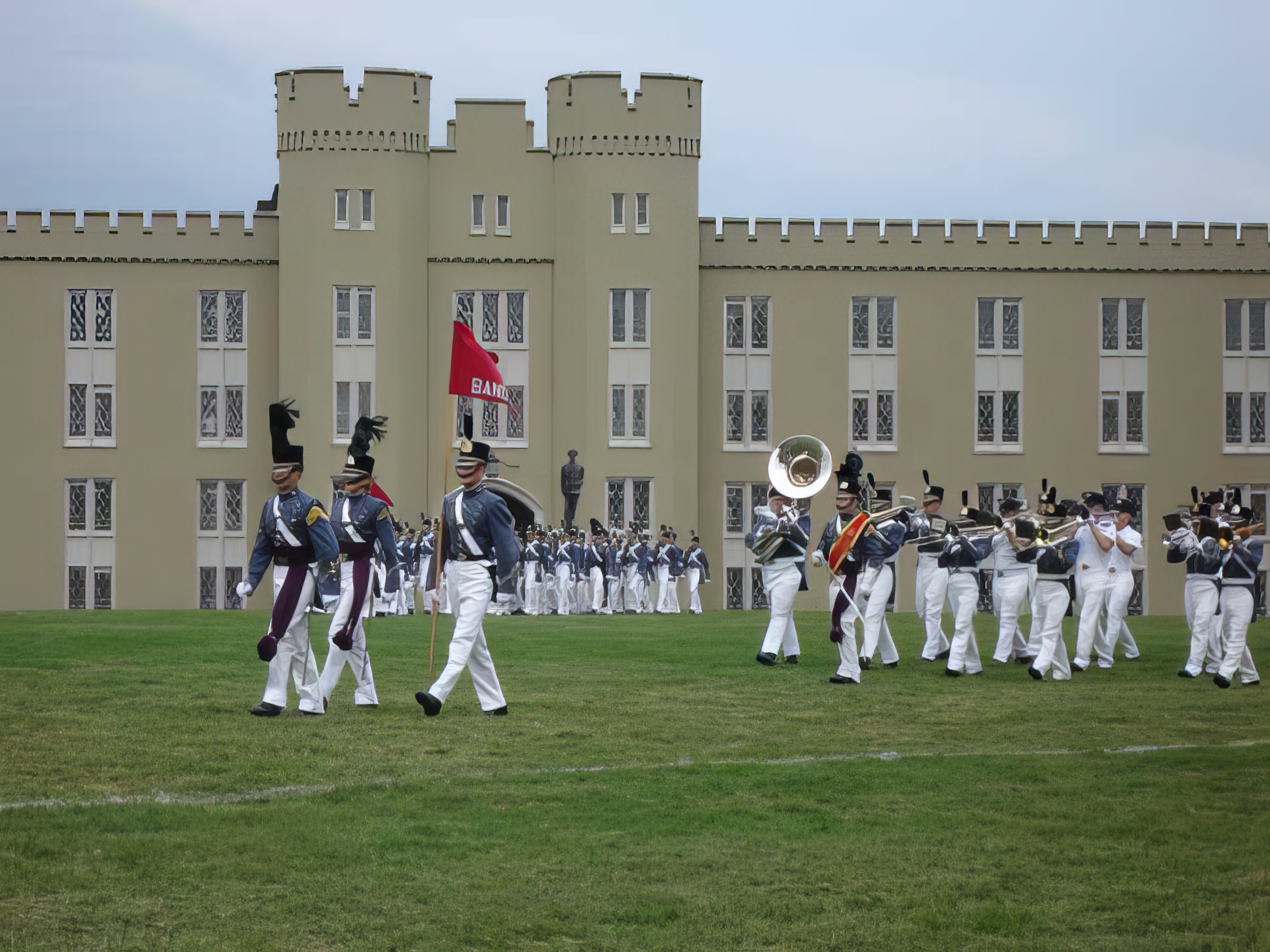

1946 - Dai Sen Zen-ji Bell, Virginia Military Institute (VMI), Lexington, Virginia (USA). Also called the Daishozen-Ji Bell. Cast in 1465, stands three feet high and weighs 450 pounds. "Captured on Okinawa by the 6th Marine Division in June 1945. The soldiers presented the bell to their Division commander, (then) Maj. Gen. Lemuel C. Shepherd, VMI Class of 1917. Shepherd subsequently gave the bell to VMI, where it was displayed on the VMI Post [adjacent to parade field] for several decades. The bell was returned to the Okinawan people in June 1991, at a ceremony attended by VMI Superintendent, Maj. Gen. John W. Knapp." Now displayed in front of Shuri Castle? (Photo taken in 1990.)




Circa 1960 - Peace Monument, Shin’ei Park, Itoman, Cape Kyan, Okinawa (Japan). "Cape Kyan today is a picturesque site within the Okinawa Battlefield Quasi National Park, however in 1945 at the last stages of the Battle of Okinawa it was the site where many civilians & soldiers jumped to their deaths." /// "To pray for world peace, a monument was founded at the tip of the cliff." /// "Hidden on the back side of the monument we found this [right image]." /// "Cape Kyan is nothing more than a scenic lookout with many Japanese visitors. There is a lighthouse that seems abandoned, a few monuments & a raised picnic area. This site, unlike Gushikawa, does not have access to the ocean."

May 1972 - Okinawa Peace Memorial Park, Mabuni Hill, Okinawa (Japan). "The Okinawa Peace Memorial Hall stands in the center of the park. As plans and arrangements were being made for the park, many memorials were constructed by the bereaved families and war comrades from each prefecture. This site represents the center of the battlefield. On Mabuni Hill itself there are about 39 memorials (as of March 1992), including Reimei-no-to and the National War Dead Peace Mausoleum. A memorial service is held every year by the Okinawa Prefecture on June 23, "Comfort Day."

1975 - Okinawa Prefectural Peace Memorial Museum, Peace Memorial Park, 614-Imabuni, Itoman, Okinawa (Japan). - Relocated to new building in 2000. (Image shows the new building.) One of 9 Japanese institutions described in brochure for 6th International Conference of the INMP in 2008. Near the Cornerstone of Peace & other peace monuments.

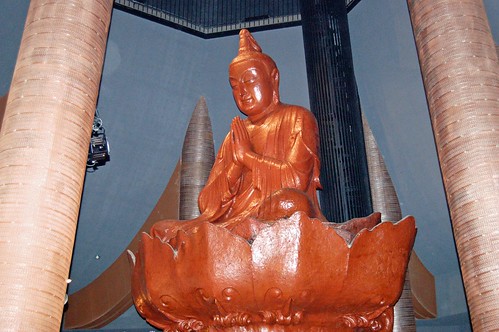

1978 - Peace Memorial Hall, Mabuni Hill, Okinawa (Japan). "The hall houses the Prayer for Peace Buddhist statue, a series of 'War and Peace' paintings and the Sacred Stone Chamber. Local artist, Shinzan Yamada, spent 18 years to create the statue, which was inspired by his two sons who were killed in the Battle of Okinawa. The statue was created using a unique Okinawan lacquer-ware technique called Tsuikin. It is the largest 'Tsuikin' lacquer statue in the world. The Sacred Stone Chamber located under the statue, contains stones from various parts of Japan and other countries."


October 1, 1978 - Okinawa Peace Bell, Peace Memorial Hall, Mabuni Hill, Okinawa (Japan). Donated by Lions International Club #337.
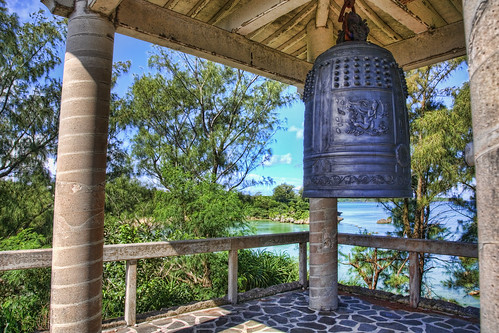





December 10, 1988 - World Peace Bell #2, Peace Loving Citizens Park, Ishigaki Island, Okinawa (Japan). Extreme south end of Japan. One of 22 WPB's erected in 15 different countries by the World Peace Bell Foundation (WPBF) of Tokyo (Japan).



June 23, 1989 - Himeyuri Peace Museum, Okinawa (Japan). Adjacent to the Himeyuri Cenotaph (right image). "It had been the Himeyuri Alumnae's strong wish to establish a memorial museum that would preserve and exhibit materials related to the Himeyuri Student Corps & convey the tragedy of war to future generations. Mr. Seizen Nakasone, who was a teacher accompanying the student corps during the war, became the first director of the museum. The museum buildings resemble those of the Okinawa Female Normal School & the First Girls' High School in the past. The beautiful flower garden in the courtyard is dedicated to the souls of the girls who lost their precious lives on the battlefield. Since the number of survivors from the war is decreasing each year, it was thought essential to relate the realities of war in a way that is more accessible to younger generations. For this purpose, the museum carried out extensive alterations of the exhibitions in 2004. Moreover, a new extension, 'The 6th Exhibition Room: The Passage to Peace,' was created with a view to passing on our wishes for peace to future generations."


November 23, 1994 - Sakima Art Museum, Ginowan City, Okinawa (Japan). - Founded by Michio Sakima "to convey the truth of war using the power of art." Overlooks US Marine Corps Air Station Futenma. "has the largest collection of Kaethe Kollwitz art work in Japan, and possibly outside Germany." Also features works by Georges-Henri Rouault, Toshi & Iri Maruki, and Makoto Ueno. Right image shows "Battle of Okinawa" painted Toshi & Iri Maruki in 1984.

1995 - Cornerstone of Peace, Mabuni, Okinawa (Japan). Site of bloodiest battle in human history. Trys to list all the names (both military and civilian) from all countries involved in the battle. As of June 2008, it contains 240,734 names. Click here for the Wikipedia article.
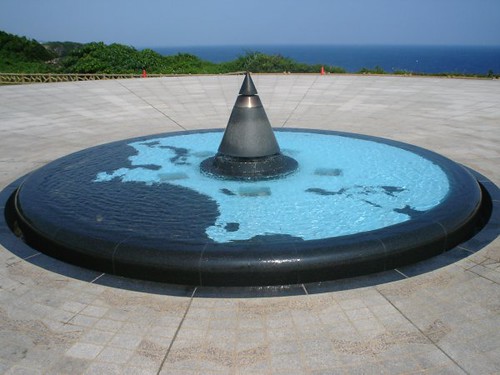
1995 - Peace Flame & Fountain, Cornerstone of Peace, Okinawa Peace Park, Okinawa (Japan). The bottom of the fountain is a map of the Pacific.


1995 or later - Japanese Stamp. Depicts the Cornerstone of Peace, Mabuni, Okinawa (Japan). Site of bloodiest battle in human history. Trys to list all the names (both military and civilian) from all countries involved in the battle. As of June 2008, it contains 240,734 names. Click here for the Wikipedia article.

2001 - Heiwa-no-Oka / Peace Hill Monument, Okinawa (Japan). Represents a naturally formed cave, in which many citizens of Okinawa hid and fended for themselves. On the granite archway is the inscription "A Strong Will Toward Peace." View in the images is from Peace Memorial Hall and shows Mabuni Hill beind the Peace Hill Monument.

Date? - House of Nuchi du Takara, Iejima Island, Okinawa (Japan). "Lesser-known museum. Birthplace of Okinawa’s peace movement. Upon entering, visitors are confronted with a small set of bloodstained clothes & the description that they belonged to an Okinawan child stabbed by Japanese troops to keep it quiet when US soldiers were in the vicinity. Other displays record the postwar 'bayonets and bulldozers' period when, in the 1950s, the Pentagon violently seized farmers’ land to turn the island into a bombing range. Exhibits include photographs of islanders’ homes razed by U.S. troops & several dummy nuclear bombs dropped on the island during Cold War training drills."


Date? - Monument to World Peace, Village of Onna, Okinawa (Japan). "Helps to lift the veil on this secret history. Due to the obliteration of Hiroshima & Nagasaki, the storage of nuclear weaponry on Okinawa has long been a sore point in Japan -- to which the Pentagon responds with blanket neither-confirm-nor-deny statements. Housed within a former nuclear missile silo built by the U.S. in the early 1960's, the museum details the presence of more than 1,200 atomic devices on Okinawa prior to its reversion to Japan in 1972. Among its exhibits is a display based upon Japan Times interviews with former U.S. nuclear technicians stationed on the island during the Cuban Missile Crisis and their assertions that the Pentagon used Okinawans as human shields..."

Date? - Han no Hi Monument, Village of Yomitan, Okinawa (Japan). "Depicts the suffering of Korean laborers brought forcibly to Okinawa during the war to work for the Japanese military. The village of Yomitan is home to Okinawa’s most famous sculptor, Minoru Kinjo, and dotted among the sugarcane fields are many of his statues which deal with historical events that some in the current Japanese government would rather forget..."



June 2007 - Relief, Village of Yomitan, Okinawa (Japan). "A sculptor based in Okinawa has completed a 100-meter relief depicting the 1945 Battle of Okinawa, installing the work at a former U.S. military facility in the village of Yomitan. Minoru Kinjo, 68, spent 10 years completing one of the scenes in the work, titled 'Senso to Ningen ('War and Human Beings'). The exhibition will run through June 24, a day after the 62nd anniversary of the end of the battle. Made of cement and plaster, the sculpture was installed along a former runway of the Yomitan Auxiliary Airfield, which was fully returned to Japan late last year. The work focuses on civilians’ perspectives of the battle, depicting a so-called mass suicide scene -- local residents rushing to their deaths or holding their already killed children, while U.S. soldiers call on them to surrender..."


Date? - Monument, Chibichirigama Cave, Village of Yomitan, Okinawa (Japan). "Commemorates the forced suicide of 83 Okinawans in April 1945; this memorial struck such a nerve with Japanese far rightists that they attempted to destroy it in 1987, and today it has been rebuilt behind protective bars." /// "Yomitan is known for one of the most devastating examples of mass suicide during World War II. Villagers took refuge in Chibichiri Cave during the Battle of Okinawa. Faced with Allied Forces fierce fighting outside the cave, and Japanese forces to the rear, approximately 140 men, women, and children were convinced or ordered by the Japanese military committed mass suicide (shudan jiketsu) on April 2, 1945."

Date? - Simple stone memorial, within the grounds of Miyamori Elementary School, City of Uruma, Okinawa (Japan). "To the east. Lists those who died stands at the scene of the crash [when] a F-100 fighter jet plowed into the school, killing 18 children & adults, on June 30, 1959, as the pupils sat down for their daily milk break. (The American pilot parachuted to safety.) A reminder of why many Okinawans protest so strongly against the military presence on their island. Permission to visit can be obtained from the school office."


Date? - Charred tree, on the campus of Okinawa International University, City of Ginowan, Okinawa (Japan). "Pvoves the ongoing risks of operating military hardware within crowded civilian communities. Damaged in an August 2004 helicopter crash, today it is the scene of annual memorial services in which local residents call for the closure of the adjacent Marine Corps Air Station Futenma base -- dubbed by then-Secretary of Defense Donald Rumsfeld as the most dangerous in the world in 2003."


Date? - Stone Monument, Village of Ada, Okinawa (Japan). "In the northern Yambaru jungles, a three-hour drive from Naha. The Okinawan peace memorial most difficult to access [but] also the most inspirational. Pays tribute to the hundreds of local villagers who, in 1971, blocked live-fire exercises in the area. Following their lengthy sit-in of the heavy gun emplacements & target areas, residents eventually forced the military to abandon its drills. Today, a large memorial near the scene immortalizes their victory -- one of Japan’s only monuments to the power of people’s protest."
March 14, 2017 - Monument to students mobilized during the Battle of Okinawa, Peace Memorial Park, City of Itoman, Okinawa (Japan). "Former members of mobilized student units attended the unveiling ceremony & expressed hope that future generations will learn about the horrors of war from the new monument. During the battle, close to 2,000 students from 21 junior high & other schools in Okinawa were enlisted to transport goods & give nursing care for Imperial Japanese soldiers. About half of the students are said to have lost their lives in the battle. While the story of the Himeyuri Student Nurse Corps made up of young women from two girls’ schools in Okinawa are known outside Japan, the history of students mobilized from other schools is not..."




